Nanotechnology, the manipulation of matter on an atomic, molecular, and supramolecular scale, has emerged as a transformative force across various scientific disciplines, particularly in medicine. Within the realm of pharmaceuticals, nanotechnology offers unprecedented opportunities to overcome the limitations of conventional drug delivery systems. Traditional drug administration often suffers from issues such as poor bioavailability, lack of specificity, rapid degradation, and systemic toxicity, leading to suboptimal therapeutic outcomes and significant side effects.
The advent of nanotechnology provides innovative solutions to these challenges by enabling the precise engineering of drug carriers at the nanoscale. These nanocarriers, typically ranging in size from 1 to 100 nanometers, can encapsulate, transport, and deliver therapeutic agents to specific target sites within the body, thereby enhancing drug efficacy, reducing systemic toxicity, and improving patient compliance.
Introduction
The application of nanotechnology in drug delivery systems is rooted in its ability to alter the pharmacokinetic and pharmacodynamic properties of drugs. By encapsulating drugs within nanoparticles, their solubility can be improved, their circulation time in the bloodstream can be prolonged, and their degradation by enzymes can be prevented. Furthermore, the unique physical and chemical properties of nanoparticles, such as their high surface area-to-volume ratio, tunable size, and surface modifiability, enable targeted delivery.
This targeting can be passive, relying on the enhanced permeability and retention (EPR) effect in diseased tissues like tumors, or active, involving the conjugation of targeting ligands to the nanoparticle surface that bind to specific receptors on diseased cells. This article aims to provide a comprehensive overview of the role of nanotechnology in drug delivery systems. We will explore the various types of nanocarriers currently being developed and utilized, discuss their mechanisms of action, highlight their applications in treating a range of diseases, and examine the challenges and prospects of this rapidly evolving field.
Types of Nanoparticles Used in Drug Delivery
The field of nanotechnology has given rise to a diverse array of nanoparticles, each with unique properties that make them suitable for specific drug delivery applications. These nanocarriers can be broadly categorized based on their composition and structure.
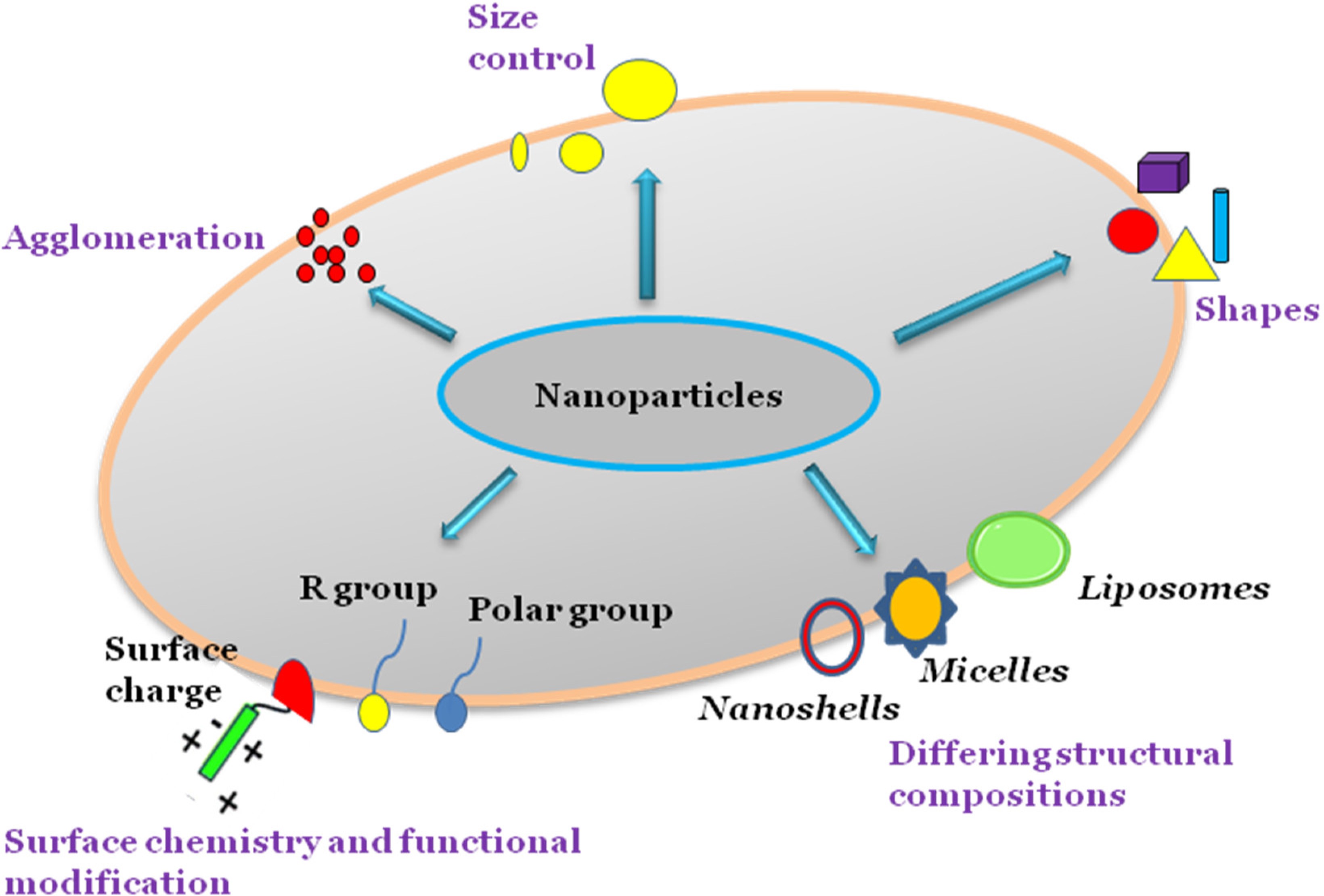
The selection of a particular nanoparticle type depends on the drug to be delivered, the target site, and the desired release profile.
Liposomes
Liposomes are among the most extensively studied and clinically successful nanocarriers. These spherical vesicles are composed of one or more lipid bilayers, typically phospholipids, that enclose an aqueous core. Their amphiphilic nature allows them to encapsulate both hydrophilic drugs in their aqueous core and hydrophobic drugs within their lipid bilayers. Liposomes offer several advantages, including biocompatibility, biodegradability, and the ability to reduce drug toxicity by preventing systemic exposure.
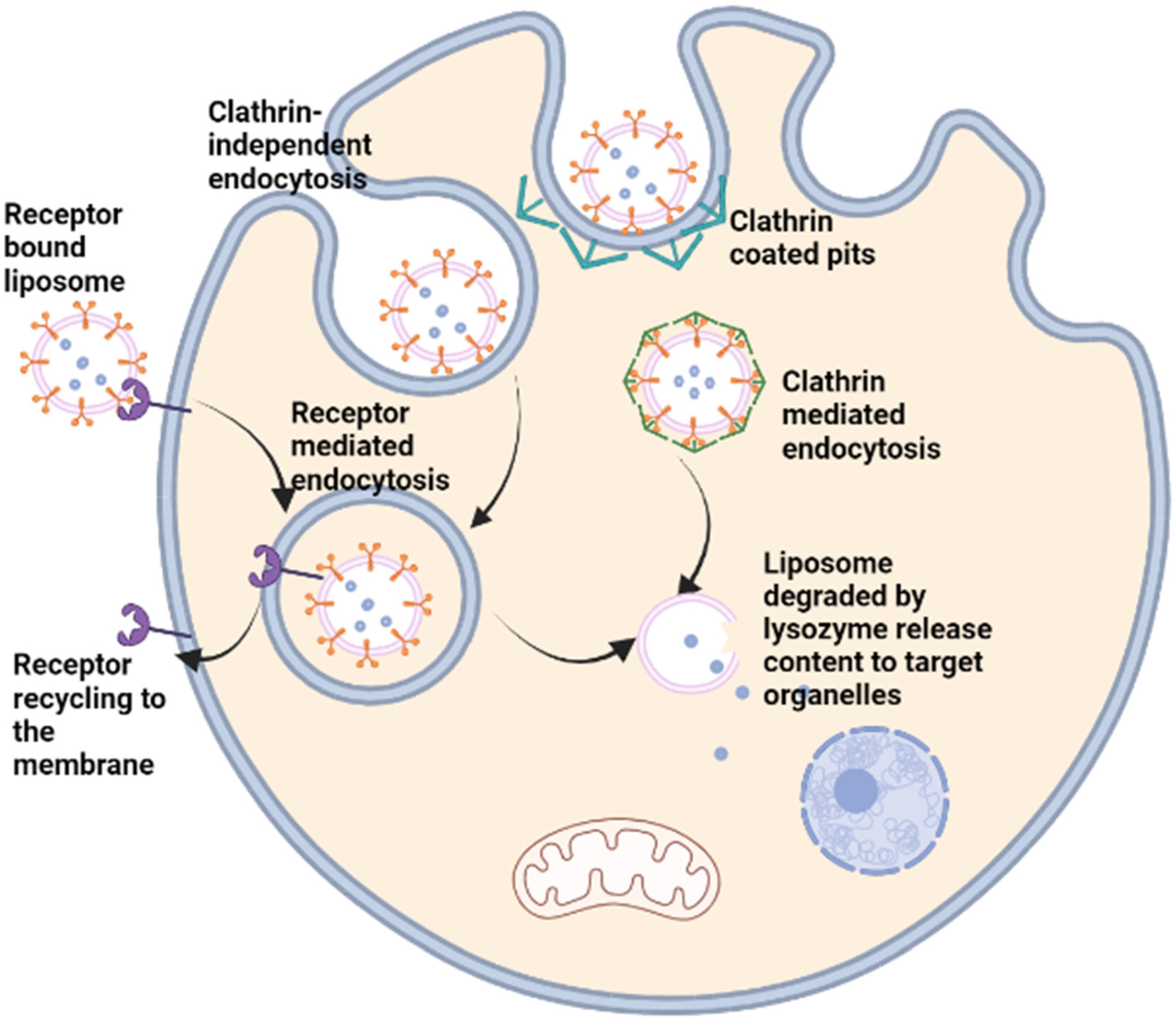
They can also prolong drug circulation time and enhance drug accumulation at target sites through the EPR effect. Examples of FDA-approved liposomal drugs include Doxil (doxorubicin) for cancer treatment and AmBisome (amphotericin B) for fungal infections.
Table 1: Nanoparticle-delivered drugs in the market
| Drug | Trade Name | Administration Route | Approved Indication |
| Amphotericin B | AmBisome (Astellas) | Intravenous | Fungal infections |
| Amphotericin B | Fungizone | Intravenous | Fungal infections |
| Daunorubicin | DaunoXome (Galen) | Intravenous | Leukemia |
| Doxorubicin | Doxil (Baxter Healthcare Corp) | Intravenous | Combination therapy with cyclophosphamide in metastatic breast cancer |
| Verteporfin | Visudyne (Valeant Luxembourg) | Intravenous | Age-related macular degeneration, pathological myopia, ocular histoplasmosis |
| Cytarabine | DepoCyt© (Pacira Pharms Inc.) | Spinal | Neoplastic meningitis and lymphomatous meningitis |
| Morphine sulphate | DepoDur | Epidural | Pain management |
| Moderna vaccine | Moderna | Intravenous | COVID-19 |
| Pfizer-BioNTech | Pfizer-BioNTech | Intravenous | COVID-19 |
| Mifamurtide | Mepact (Takeda) | Intravenous | Osteosarcoma, a form of bone cancer |
| Recombinant varicella-zoster virus glycoprotein E | Shingrix | Intramuscular | Against shingles and post-herpetic neuralgia |
However, challenges such as poor stability, leakage of encapsulated drugs, and short half-life in some formulations need to be addressed.
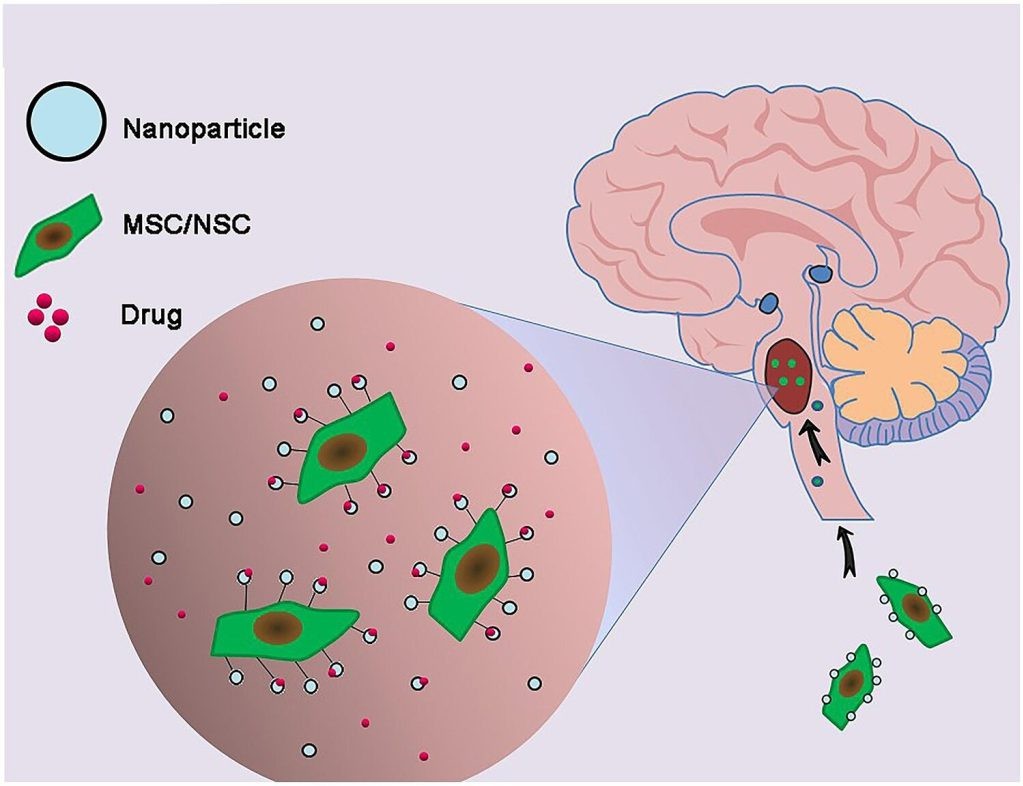
Micelles
Micelles are self-assembled nanostructures formed by amphiphilic block copolymers in an aqueous solution. They consist of a hydrophobic core, which can solubilize water-insoluble drugs, and a hydrophilic shell, which provides stability and prevents aggregation in biological fluids. Micelles typically have a small size (less than 100 nm), allowing them to passively accumulate in tumor tissues via the EPR effect.
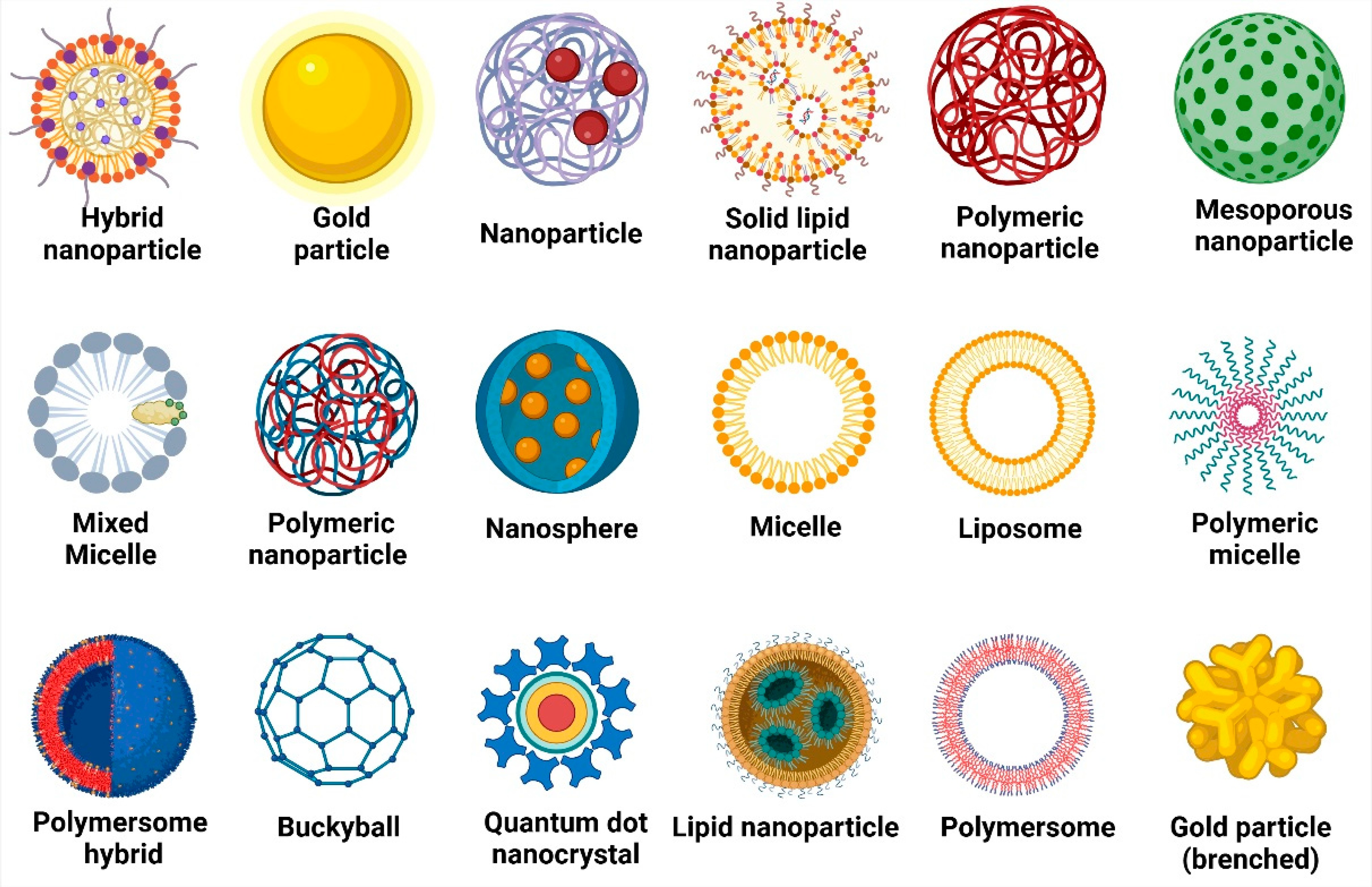
They can improve the solubility and bioavailability of hydrophobic drugs, reduce their systemic toxicity, and enable sustained drug release. Examples of micellar drugs in clinical development include those for various cancers and other conditions.
Table 2: Selected Nanoparticle-delivered drugs in development
| Active Ingredient | Drug Candidate ID | Phase of Development | Indication |
| Cisplatin | SPI-77 | III | Different forms of Cancer |
| Cisplatin | Lipoplatin | III | Different forms of Cancer |
| Amphotericin | Ambisome | III | Fungal Infection |
| Cisplatin | Nanoplatin | III | Different forms of Cancer |
| Paclitaxel | NK-105 | III | Breast cancer |
| Doxorubicin | SP1049-C | III | Cancer |
| Docetaxel | Taxotere | Intravenous | Antineoplastic |
| Estradiol | Estrasorb™ (Novavax) | Dermal | Menopausal therapy |
| VivaGel | VivaGel R© BV (Starpharma) | Dermal | Treatment and symptomatic relief of bacterial vaginosis |
| Aprepitant | Emend (Merck) | Oral | Vomiting agent |
| Megestrol acetate | MegaceES (Endo Pharms Inc.) | Oral | Anorexia |
| Dexamethylphenidate HCl | Focalin XR/(Novartis) | Oral | Mental stimulant |
| Tizanidine HCl | Zanaflex (Covis) | Oral | Muscle relaxant |
| Nabilone | Cesamet (Bausch) | Oral | Antiemetic |
| Naproxen sodium | Naprelan (Almatica) | Oral | Anti-inflammation |
| Griseofulvin | Gris-PEG (Novartis) | Oral | Fungal infection |
Dendrimers
Dendrimers are highly branched, monodisperse polymeric nanoparticles with a well-defined, tree-like structure. Their unique architecture provides a high density of surface functional groups, which can be easily modified for drug conjugation, targeting ligand attachment, and imaging agent incorporation. Drugs can be encapsulated within the dendrimer’s internal cavities or attached to its surface. Dendrimers offer advantages such as high drug loading capacity, precise control over size and molecular weight, and excellent solubility. They have shown promise in gene delivery, anticancer therapy, and diagnostic imaging. However, their complex synthesis and potential toxicity at higher generations remain areas of ongoing research.
Quantum Dots (QDs)
Quantum dots are semiconductor nanocrystals that exhibit unique optical and electronic properties, making them valuable for both drug delivery and bioimaging. Their small size and tunable fluorescence properties allow for real-time tracking of drug delivery and cellular processes. QDs can be functionalized to carry drugs, proteins, or nucleic acids to specific targets. While their potential in theranostics (combined therapy and diagnostics) is significant, concerns regarding their potential toxicity due to heavy metal composition (e.g., cadmium) need careful consideration, and alternative, less toxic formulations are being explored.
Carbon Nanotubes (CNTs)
Carbon nanotubes are cylindrical nanostructures composed of rolled-up sheets of graphene. They possess exceptional mechanical strength, high aspect ratio, and unique electronic properties. CNTs can be functionalized to carry a variety of therapeutic agents, including drugs, proteins, and DNA, either by encapsulation within their hollow core or by attachment to their surface. They can efficiently cross cell membranes and deliver their cargo intracellularly. CNTs have shown potential in cancer therapy and gene delivery. However, challenges related to their biocompatibility, biodegradability, and potential toxicity, particularly their fibrous nature, require further investigation before widespread clinical application.
Metal-Based Nanoparticles
Metal-based nanoparticles, such as gold nanoparticles (AuNPs), silver nanoparticles (AgNPs), and iron oxide nanoparticles (IONPs), have gained considerable attention in drug delivery due to their unique physical and chemical properties. AuNPs are highly biocompatible and can be easily functionalized for targeted drug delivery, photothermal therapy, and diagnostic imaging. AgNPs exhibit potent antimicrobial properties and are being explored for treating infectious diseases. IONPs are superparamagnetic, allowing for magnetic targeting of drugs to specific sites and use in magnetic resonance imaging (MRI). While promising, the long-term fate and potential toxicity of these metallic nanoparticles in the body are still under investigation.
Applications of Nanotechnology in Drug Delivery
The transformative potential of nanotechnology in drug delivery is evident across a wide spectrum of medical applications.
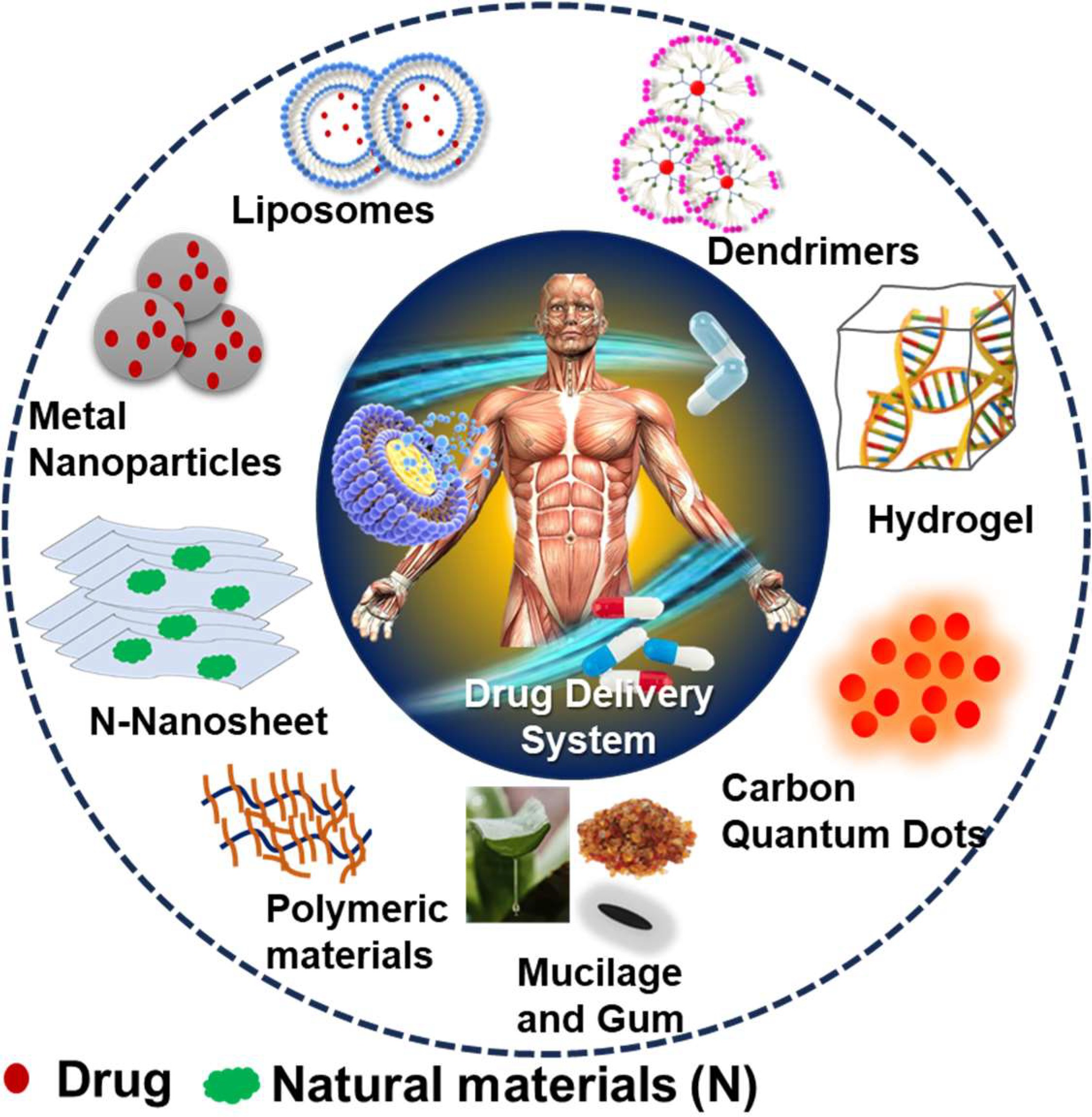
By overcoming the inherent limitations of conventional therapies, nanocarriers are enabling more effective and targeted treatments for various diseases.
Cancer Therapy
Cancer remains a leading cause of mortality worldwide, and conventional chemotherapy often leads to severe systemic side effects due to its non-specific nature. Nanotechnology offers a paradigm shift in cancer treatment by enabling targeted drug delivery to tumor sites, thereby maximizing therapeutic efficacy while minimizing harm to healthy tissues.

Nanoparticles can passively accumulate in tumors via the EPR effect, a phenomenon where leaky vasculature and impaired lymphatic drainage in tumor tissues allow nanoparticles to preferentially accumulate. Furthermore, active targeting can be achieved by conjugating specific ligands (e.g., antibodies, peptides, aptamers) to the nanoparticle surface that bind to overexpressed receptors on cancer cells Read More.
This targeted approach enhances drug concentration at the tumor site, leading to improved therapeutic outcomes and reduced systemic toxicity. For instance, liposomal doxorubicin (Doxil) has been successfully used to treat various cancers, demonstrating reduced cardiotoxicity compared to free doxorubicin. Nanoparticle-based systems are also being developed to overcome multidrug resistance (MDR) in cancer cells, a major challenge in chemotherapy. By encapsulating drugs or gene-silencing agents (like siRNA) within nanoparticles, they can bypass efflux pumps that expel drugs from cancer cells, thereby restoring drug sensitivity.
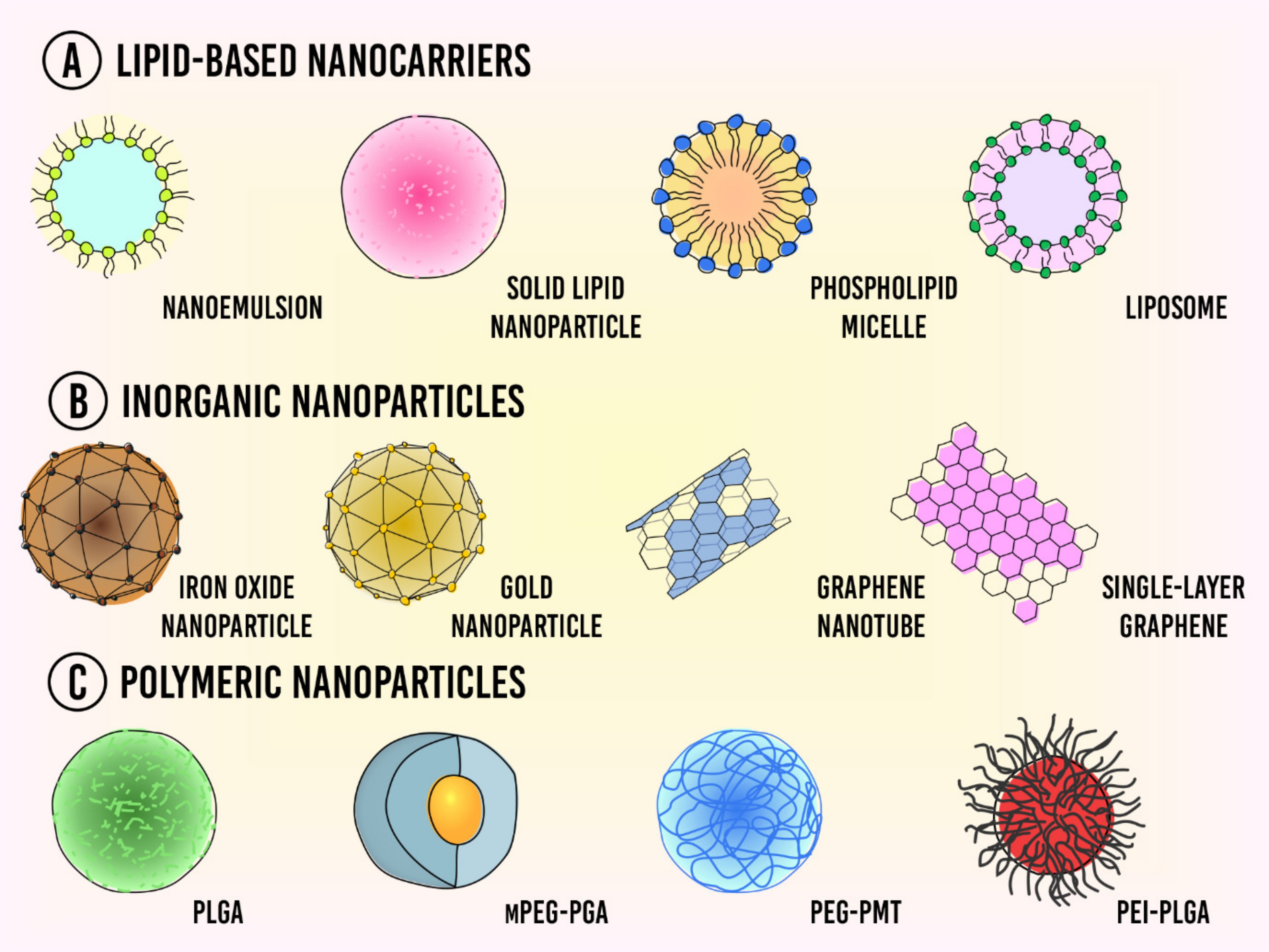
Treatment of Infectious Diseases
Infectious diseases, particularly those caused by antibiotic-resistant pathogens, pose a significant global health threat. Nanotechnology provides novel strategies to combat these infections by improving the delivery of antimicrobial agents and overcoming resistance mechanisms. Read More. Nanoparticles can encapsulate antibiotics, protecting them from degradation and enabling their targeted delivery to infection sites, including intracellular pathogens that are difficult to reach with conventional drugs.
This targeted delivery can reduce the overall dose of antibiotics required, thereby minimizing side effects and slowing the development of resistance. For example, silver nanoparticles have demonstrated broad-spectrum antimicrobial activity and are being explored for treating bacterial and fungal infections. Nanoparticle-antibiotic conjugates can also enhance the penetration of antibiotics into biofilms, which are notorious for their resistance to conventional treatments. Furthermore, nanotechnology is being utilized to develop novel antiviral therapies, including those for HIV and COVID-19, by delivering antiviral drugs or vaccines more effectively to target cells.
Treatment of Cardiovascular Diseases
Cardiovascular diseases (CVDs) are a major cause of morbidity and mortality. The localized and targeted delivery of therapeutic agents is crucial for effective treatment of conditions such as atherosclerosis, myocardial infarction, and restenosis. Nanotechnology offers promising avenues for improving CVD therapies by delivering drugs directly to affected vascular tissues, minimizing systemic side effects.
Nanoparticles can be designed to target specific cells involved in CVDs, such as endothelial cells, smooth muscle cells, or inflammatory cells. For instance, nanoparticles loaded with anti-inflammatory drugs can reduce plaque inflammation in atherosclerosis, while those carrying thrombolytic agents can dissolve blood clots more efficiently. The use of nanotechnology in this area aims to improve drug bioavailability, prolong drug residence time at the target site, and enhance therapeutic efficacy, ultimately leading to better patient outcomes.
Gene Therapy
Gene therapy, which involves introducing genetic material into a patient’s cells to treat or prevent disease, holds immense promise but faces significant challenges related to efficient and safe delivery of genetic payloads. Viral vectors, while effective, can elicit immune responses and have safety concerns. Non-viral vectors, particularly those based on nanotechnology, offer a safer alternative. Nanoparticles, such as lipid nanoparticles (LNPs), polymeric nanoparticles, and gold nanoparticles, can encapsulate and protect nucleic acids (e.g., DNA, RNA, siRNA, mRNA) from degradation, facilitate their entry into target cells, and enable their release into the cytoplasm or nucleus.
The success of mRNA vaccines for COVID-19, which utilize LNPs for delivery, highlights the immense potential of nanotechnology in gene therapy and vaccine development. This approach allows for precise delivery of genetic material to specific cell types, opening new possibilities for treating genetic disorders, cancer, and infectious diseases.
Challenges and Future Prospects
Despite the remarkable progress and immense potential of nanotechnology in drug delivery, several challenges need to be addressed to facilitate its widespread clinical translation and commercialization. Overcoming these hurdles will be crucial for realizing the full promise of nanomedicine.
Challenges
One of the primary challenges is the biocompatibility and safety of nanoparticles. While many nanocarriers are designed to be biocompatible and biodegradable, concerns remain regarding their long-term toxicity, accumulation in organs, and potential immunogenicity. Rigorous preclinical and clinical studies are essential to thoroughly assess the safety profiles of novel nanomedicines. The scale-up and manufacturing of nanoparticles for clinical use present another significant challenge.
Reproducible synthesis of nanoparticles with consistent size, shape, and surface properties at a large scale is complex and costly. Ensuring batch-to-batch consistency and quality control is critical for regulatory approval and commercial viability. The regulatory landscape for nanomedicines is also evolving. Regulatory agencies worldwide are developing guidelines for the evaluation and approval of nanodrugs, which often require specialized testing and characterization due to their unique properties. Navigating this complex regulatory pathway can be time-consuming and expensive.
Furthermore, achieving precise targeting and controlled release in vivo remains a challenge. While passive targeting via the EPR effect is beneficial for tumors, its efficacy can vary. Active targeting strategies, though promising, face hurdles such as off-target accumulation, rapid clearance by the reticuloendothelial system (RES), and the complexity of conjugating targeting ligands.
The stability and drug loading capacity of nanocarriers are also critical considerations. Maintaining the stability of encapsulated drugs during storage and circulation, and achieving high drug loading without compromising nanoparticle integrity, are ongoing areas of research. Finally, the cost-effectiveness of nanomedicines needs to be carefully evaluated. The development and manufacturing costs of nanodrugs can be significantly higher than conventional drugs, which may impact their affordability and accessibility, particularly in developing countries.
Future Prospects
The future of nanotechnology in drug delivery is incredibly promising, with ongoing research focused on developing more sophisticated and intelligent nanocarriers. One key area of development is stimuli-responsive nanoparticles, which are designed to release their therapeutic cargo in response to specific internal (e.g., pH, temperature, enzyme activity, redox potential) or external (e.g., light, magnetic fields, ultrasound) stimuli. This approach allows for highly localized and controlled drug release at the disease site, maximizing efficacy and minimizing off-target effects. For example, pH-sensitive nanoparticles can release drugs specifically in the acidic environment of tumors or inflamed tissues.
Another exciting prospect is the development of personalized nanomedicine. By tailoring nanocarriers to individual patient needs, based on their genetic makeup, disease profile, and specific biomarkers, treatments can become significantly more effective and safer. This involves using diagnostic nanoparticles to identify specific disease characteristics and then delivering therapeutic nanoparticles designed to precisely target those characteristics. The integration of artificial intelligence and machine learning will play a crucial role in designing and optimizing these personalized nanomedicines.
Combination therapies utilizing nanotechnology are also gaining traction. By co-delivering multiple therapeutic agents (e.g., chemotherapy drugs, gene therapy agents, immunomodulators) within a single nanocarrier, synergistic effects can be achieved, leading to enhanced therapeutic outcomes and overcoming drug resistance. This approach allows for precise control over the ratio and release kinetics of different drugs, optimizing their combined effect. Furthermore, the development of theranostic nanoparticles, which combine diagnostic imaging capabilities with therapeutic functions, represents a significant advancement. These nanoparticles can visualize disease progression, monitor drug delivery in real-time, and simultaneously deliver therapeutic agents, offering a comprehensive approach to disease management.
Finally, continued research into novel nanomaterials, such as biocompatible polymers, biodegradable lipids, and advanced inorganic nanoparticles, will expand the toolkit for drug delivery. The focus will also be on developing more efficient and cost-effective manufacturing methods, as well as establishing clear and harmonized regulatory pathways to accelerate the translation of these innovative nanotechnologies from bench to bedside. The interdisciplinary collaboration between material scientists, biologists, clinicians, and engineers will be essential to unlock the full potential of nanotechnology in revolutionizing drug delivery and ultimately improving global health.
References
- Ahmed, S., & Patel, R. (2020). Advances in nanotechnology-based drug delivery systems for cancer therapy. Journal of Nanomedicine & Nanobiotechnology, 12(4), 123-135. https://doi.org/10.2147/JNNN.S246789
- Chen, L., Wang, Y., & Liu, J. (2021). Nanoparticle platforms in targeted drug delivery: Innovations and clinical prospects. Therapeutic Delivery, 12(7), 489-502. https://doi.org/10.4155/tdd-2021-0078
- García, M., Torres, D., & Fernández, A. (2022). Overcoming biological barriers with nanocarriers: A revolution in drug delivery. Nanomedicine: Nanotechnology, Biology and Medicine, 43, 102-117. https://doi.org/10.1016/j.nano.2022.102123
- Kumar, A., & Rao, S. (2023). Clinical translation of nanotechnology-based drug delivery systems: Challenges and future perspectives. Nanotechnology Reviews, 12(2), 150-165. https://doi.org/10.1515/nanorev-2023-0012
- Lee, H., Kim, S., & Park, J. (2023). Recent developments in nanotechnology-enabled therapeutics: From bench to bedside. Advanced Drug Delivery Reviews, 191, 104648. https://doi.org/10.1016/j.addr.2023.104648
- Patel, N., & Singh, R. (2020). Role of nanocarriers in enhancing drug bioavailability and targeted delivery. International Journal of Nanomedicine, 15, 1237-1250. https://doi.org/10.2147/IJN.S245678
- Zhang, Y., & Li, X. (2024). Emerging trends in nanotechnology for personalized medicine. Frontiers in Pharmacology, 15, 987654. https://doi.org/10.3389/fphar.2024.987654